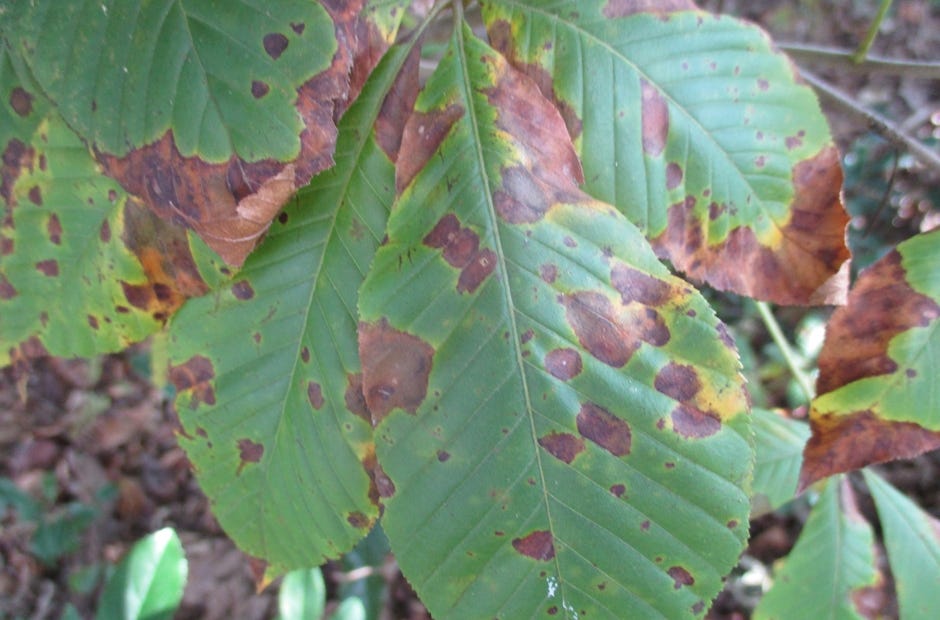![Fungicides can treat some fungal leaf spot diseases, which can affect plants like red buckeye. [Larry Williams | Special to the News Bulletin]](http://127.0.0.1/wordpress/wp-content/uploads/2022/01/ghows-DA-571315db-f499-04fa-e053-0100007f7ff1-2905ad11.jpeg)
We continue to get many questions from homeowners concerning spots on the leaves of their trees, shrubs, vegetable plants and in their lawns.
These foliage diseases show up mostly as tan, brown or black spots varying in size, shape and number on plant leaves.
The frequent rains and high humidity of summer provided ideal conditions for foliage disease development in our lawns, landscapes and gardens.
Most fungal diseases are dependent on moisture, especially foliage or leaf spot diseases. They are mostly spread by microscopic airborne spores that require moisture to germinate, infect and colonize our plants.
Many fungal leaf spot diseases require a 12- to 14-hour period of uninterrupted wetness.
A University of Florida Institute of Food and Agricultural Sciences Extension fact sheet on gray leaf spot of St. Augustinegrass states, "Warm rainy spells from May through September commonly produce extended periods (12 hours and greater) of leaf wetness and relative humidity greater than 95 percent. During these periods, turfgrass leaf blades can remain wet and air temperatures often hover between 80 and 90 degrees Fahrenheit. Environmental conditions such as these are ideal for the pathogen growth, infection and colonization of St. Augustinegrass."
Leaf spot diseases of vegetables, trees and shrubs follow this same scenario. With higher humidity and frequent rains come diseased leaves.
This wet weather promotes foliage and fruit rot diseases on vegetables too. It's best to remove and dispose of diseased, worn-out vegetable plants as they succumb to summer's heat, frequent rains and diseases.
Not all plants are equally susceptible to foliage diseases. It's wise to learn the landscape and garden plants that are likely to experience disease problems as a result of our wet summer weather here in Florida.
A fungicide spray program can be used to prevent and reduce many of these diseases, but it needs to begin ahead of the symptoms to be effective.
Frequent rains can make it a challenge to apply a fungicide in a timely manner. There are also cultural practices that can be helpful in managing some of these diseases.
Not all leaf spot diseases are serious. If you need help identifying or controlling a foliage disease, contact the University of Florida Extension Office in your county. The Crestview office is at 3098 Airport Road (689-5850).
Larry Williams is an agent at the University of Florida's Institute of Food and Agricultural Sciences Extension office in Crestview.


This article originally appeared on Crestview News Bulletin: Spotted leaves in lawn, landscape and garden is common
